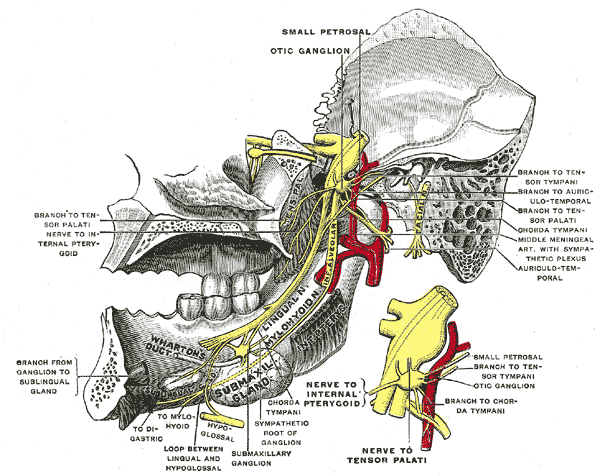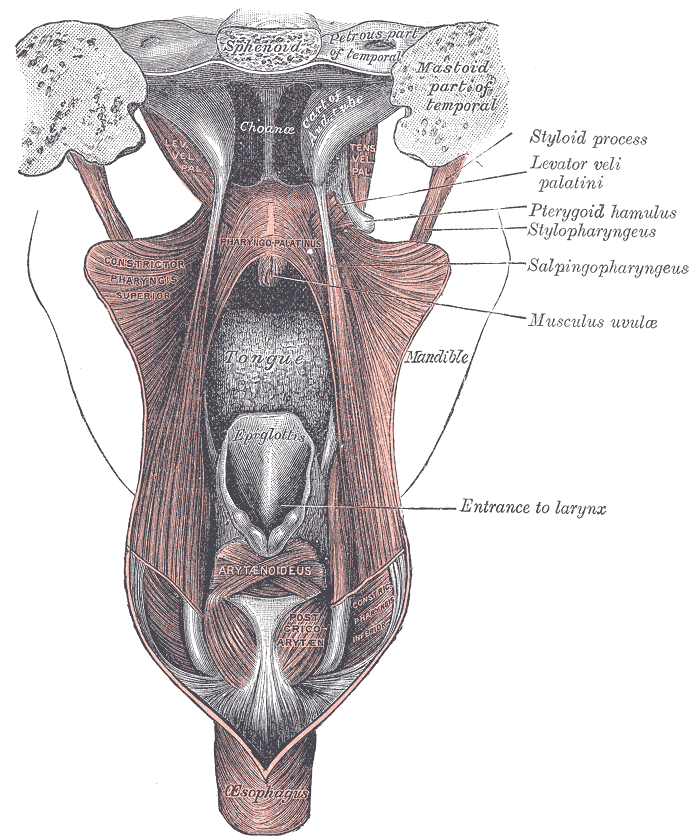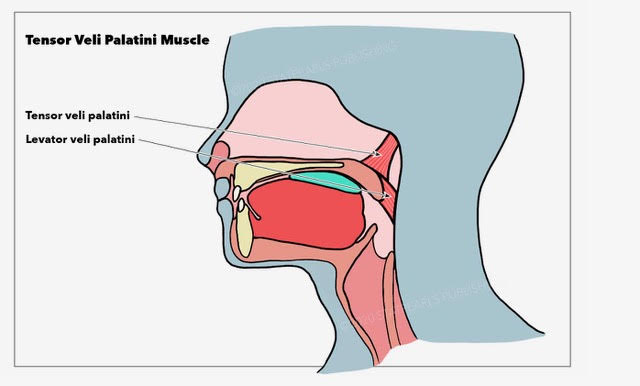[1]
Gyanwali B, Li H, Xie L, Zhu M, Wu Z, He G, Tang A. The role of tensor veli palatini muscle (TVP) and levetor veli palatini [corrected] muscle (LVP) in the opening and closing of pharyngeal orifice of Eustachian tube. Acta oto-laryngologica. 2016:136(3):249-55. doi: 10.3109/00016489.2015.1107192. Epub 2015 Dec 1
[PubMed PMID: 26624574]
[2]
George TN, Kotlarek KJ, Kuehn DP, Sutton BP, Perry JL. Differences in the Tensor Veli Palatini Between Adults With and Without Cleft Palate Using High-Resolution 3-Dimensional Magnetic Resonance Imaging. The Cleft palate-craniofacial journal : official publication of the American Cleft Palate-Craniofacial Association. 2018 May:55(5):697-705. doi: 10.1177/1055665617752802. Epub 2018 Jan 23
[PubMed PMID: 29360409]
[3]
Cho JH, Kim JK, Lee HY, Yoon JH. Surgical anatomy of human soft palate. The Laryngoscope. 2013 Nov:123(11):2900-4. doi: 10.1002/lary.24067. Epub 2013 May 17
[PubMed PMID: 23686451]
[4]
Schönmeyr B, Sadhu P. A review of the tensor veli palatine function and its relevance to palatoplasty. Journal of plastic surgery and hand surgery. 2014 Feb:48(1):5-9. doi: 10.3109/2000656X.2013.793603. Epub 2013 May 28
[PubMed PMID: 23710786]
[5]
De la Cuadra Blanco C, Peces Peña MD, Rodríguez-Vázquez JF, Mérida-Velasco JA, Mérida-Velasco JR. Development of the human tensor veli palatini: specimens measuring 13.6-137 mm greatest length; weeks 6-16 of development. Cells, tissues, organs. 2012:195(5):392-9. doi: 10.1159/000329253. Epub 2011 Sep 9
[PubMed PMID: 21912075]
[6]
Leuwer R. Anatomy of the Eustachian Tube. Otolaryngologic clinics of North America. 2016 Oct:49(5):1097-106. doi: 10.1016/j.otc.2016.05.002. Epub 2016 Jul 25
[PubMed PMID: 27468634]
[7]
Picciotti PM, Della Marca G, D'Alatri L, Lucidi D, Rigante M, Scarano E. Tensor veli palatini electromyography for monitoring Eustachian tube rehabilitation in otitis media. The Journal of laryngology and otology. 2017 May:131(5):411-416. doi: 10.1017/S0022215117000482. Epub 2017 Mar 15
[PubMed PMID: 28294083]
[8]
Rodríguez-Vázquez JF, Sakiyama K, Abe H, Amano O, Murakami G. Fetal Tendinous Connection Between the Tensor Tympani and Tensor Veli Palatini Muscles: A Single Digastric Muscle Acting for Morphogenesis of the Cranial Base. Anatomical record (Hoboken, N.J. : 2007). 2016 Apr:299(4):474-83. doi: 10.1002/ar.23310. Epub 2016 Jan 27
[PubMed PMID: 26744237]
[9]
Huang MH, Lee ST, Rajendran K. Clinical implications of the velopharyngeal blood supply: a fresh cadaveric study. Plastic and reconstructive surgery. 1998 Sep:102(3):655-67
[PubMed PMID: 9727428]
[10]
Su CY, Hsu SP, Chee CY. Electromyographic study of tensor and levator veli palatini muscles in patients with nasopharyngeal carcinoma. Implications for eustachian tube dysfunction. Cancer. 1993 Feb 15:71(4):1193-200
[PubMed PMID: 8435792]
[11]
Okada R, Muro S, Eguchi K, Yagi K, Nasu H, Yamaguchi K, Miwa K, Akita K. The extended bundle of the tensor veli palatini: Anatomic consideration of the dilating mechanism of the Eustachian tube. Auris, nasus, larynx. 2018 Apr:45(2):265-272. doi: 10.1016/j.anl.2017.05.014. Epub 2017 Jun 16
[PubMed PMID: 28625531]
[12]
Sapci T, Mercangoz E, Evcimik MF, Karavus A, Gozke E. The evaluation of the tensor veli palatini muscle function with electromyography in chronic middle ear diseases. European archives of oto-rhino-laryngology : official journal of the European Federation of Oto-Rhino-Laryngological Societies (EUFOS) : affiliated with the German Society for Oto-Rhino-Laryngology - Head and Neck Surgery. 2008 Mar:265(3):271-8
[PubMed PMID: 17851675]



